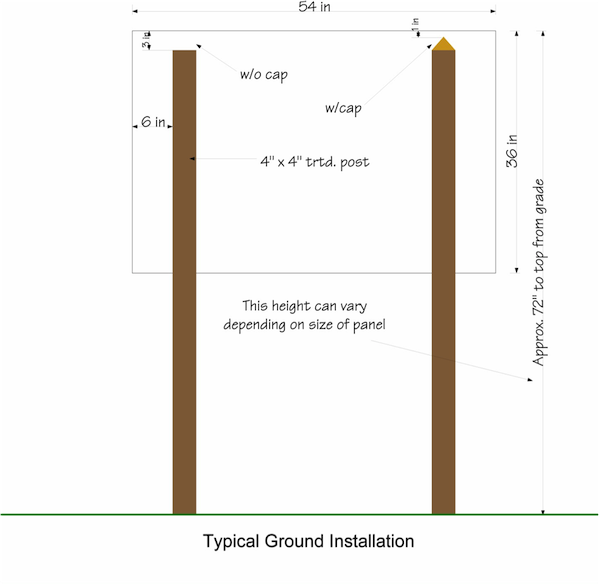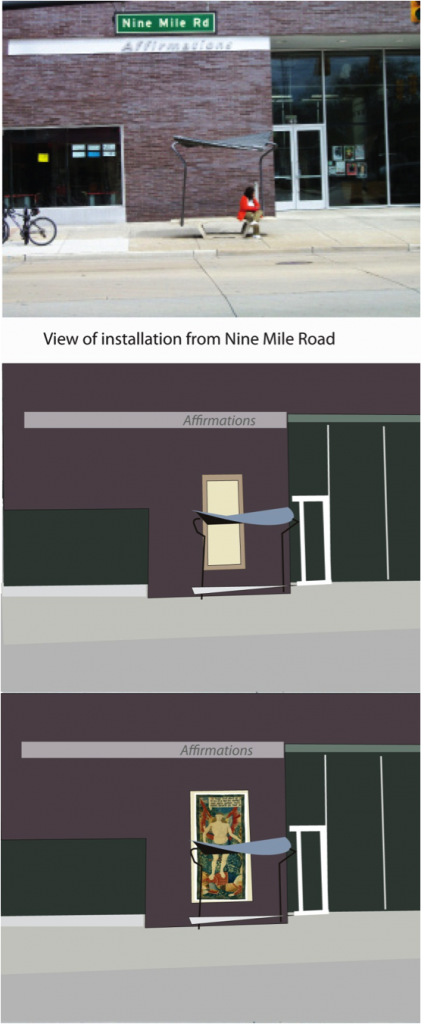
Planning Inside|Out: What we’ve learned over the years
By Michelle Hauske, DIA Inside|Out coordinator
Planning for the next round of Inside|Out is always challenging. Every installation is unique, and each city has its own requirements for obtaining approval to install. The DIA has a multi-step process that gets the reproductions from the warehouse to the walls and involves communities along the way.
We first meet with community representatives to discuss the program, look at potential installation sites, and gather information about local events and activities. We photograph the potential sites, take measurements of walls, and meet with private business owners to make sure they’re interested in hosting a reproduction. Then we present to city council, submit detailed installation drawings to the building department, provide a list of proposed reproductions, process paperwork for permits, and provide insurance information. Depending on each city’s requirements, we might also submit a proposal to an appearance review board or historic commission.

I’ve found that it’s usually quicker to get approval for city-owned property than private businesses. After the program has been approved by council and relevant boards, the paperwork is submitted, and the locations and artwork selection are agreed upon, and the city can sign off on all of the installation agreements at once. It can take much more time when working with a private location because you need the business owner’s approval in addition to the city’s. If a business owner is renting the space, than we also need to get approval from the owner of the building. In one case, we ended up having to reach someone who lived overseas, and we weren’t able to contact him.
The subject matter of the reproductions can cause issues as well. Though internally we recognize the artwork as great masterpieces, they are not always perceived the same way outside museum walls. The Nightmare, by Henri Fuseli, can be a very difficult sell because many view it to be too frightening. One season we installed the reproduction on a city hall and learned that residents were complaining about it. However, the mayor recognized it as a great work of art, turned down our offer to replace it with a different reproduction, and encouraged people who submitted complaints to visit the original in the museum. In another instance, a private business owner felt that The Nightmare was too scary for his location and requested we swap it out. The city, however, really wanted the reproduction to remain in the community and was able to find an alternate location. Woman in an Armchair by Pierre Auguste Renoir surprisingly gives us the most grief. Some were uncomfortable because they felt the subject in painting was “too voluptuous and showing too much flesh,” and we often have issues finding her a good home. These works may cause initial setbacks, but we feel they are important to have out in the community to expose people to art.


Something new this year that proved to be incredibly helpful was a marketing and programming kick-off meeting held at the DIA during the planning stages of the upcoming Inside|Out season. We invited representatives from each community to an information session and spoke to them about the installation process, program possibilities, and marketing tools we have in place. This gave participants a chance to meet and discuss ideas with other communities, and, as a result, we have had a lot of cross-community programming opportunities.
One of the most important realizations we’ve made during our three-year run of the program is how valuable community partnership is. Our community partners have been instrumental in helping us make Inside|Out a success, especially when it comes to choosing locations, distributing installation contracts, obtaining approval to install, developing on-site programming, and promoting the program in each community. We’ve learned that working directly with community partners from the get-go drastically accelerates the approval process for the program. City employees—township supervisors, downtown development authorities, parks and recreation departments, arts commissioners—are accustomed to their city regulations and know what steps we need to pursue. With their help, Inside|Out is a more impactful program in each community.
Recent Content
-
Artsarticle ·
-
Artsarticle ·
-
Artsarticle ·

